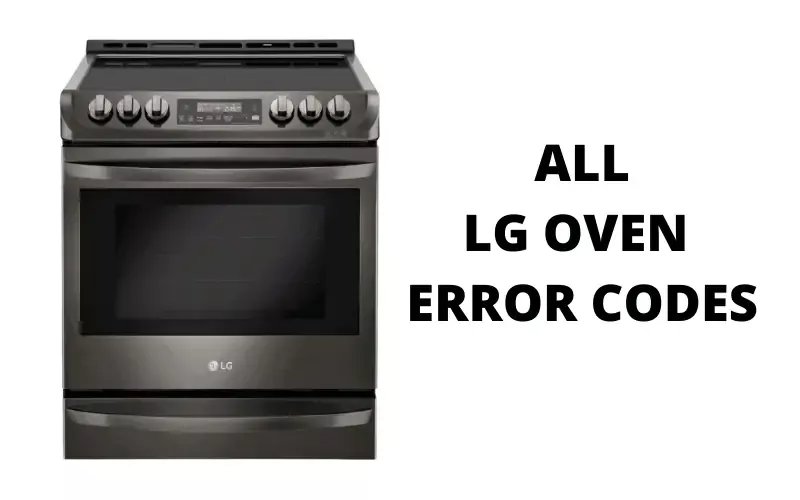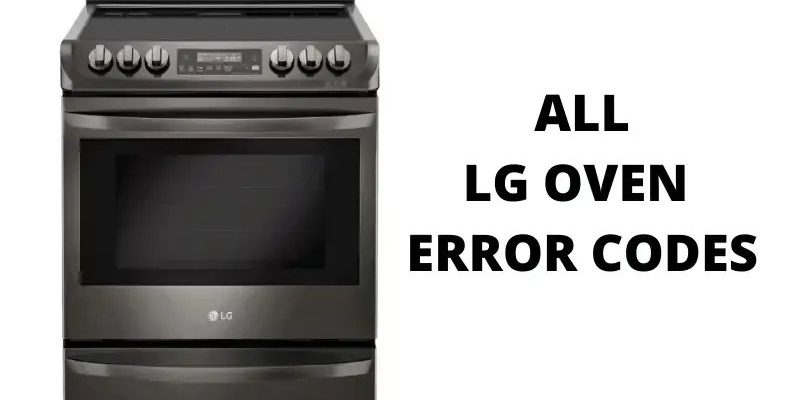
Here’s the good news: Error Code E1 isn’t as scary as it sounds. Think of it as the oven’s way of saying, “I need a little attention, please.” It’s like when your car’s check engine light comes on, nudging you to check under the hood. This error code usually signals a communication error in the appliance’s system, often related to a faulty wiring connection or an issue with the temperature sensor. Let’s dive into how you can reset your LG oven or range and get back to cooking your favorite meals without a hitch.
Understanding Error Code E1 on LG Ovens and Ranges
Error Code E1 might feel like it’s written in a different language, but it’s really just your oven’s way of communicating a specific problem. In most cases, this code points to a problem with the wiring or the temperature sensor, which is a key part of how your oven regulates heat. Imagine the sensor as the oven’s internal thermometer. When it’s not working right, it’s like trying to bake a cake without knowing the oven temperature — not exactly ideal!
These sensors send information to the control board to keep the temperature consistent. When there’s a disruption in communication, the control board can’t effectively manage the oven’s heat, leading to problematic cooking results. Think of it as trying to have a conversation on a bad phone connection — the message just doesn’t get through correctly. This is why your oven flashes the error code; it’s letting you know there’s a hiccup in the system that needs your attention.
So, why does this happen? There could be a few reasons. Over time, everyday use can cause wires to become loose or sensors to wear out. Maybe there’s a power surge that throws the system off-kilter. Whatever the cause, the important part is that resetting the appliance can often clear the error code, just like rebooting a computer to fix minor glitches. But before you reach for the power button, you’ll need to follow some steps to ensure a full and proper reset.
Steps to Reset Your LG Oven or Range
First things first, you’ll want to ensure your safety, so always start by unplugging your appliance or switching off the circuit breaker. Safety is like the foundation of a house; you’d never want to ignore it. With the power off, you can safely disconnect the oven or range and prepare for a reset. This step helps ensure there’s no live electricity running through the appliance as you work, much like making sure a car is parked before you pop the hood.
After you’ve ensured the appliance is safely powered down, wait for about a minute or two. This short wait period allows the oven’s internal systems to completely reset — it’s like giving it a short nap to clear its temporary memory. Once these few minutes have passed, go ahead and plug the appliance back in or switch the circuit breaker back on. This part of the process is akin to rebooting your router to fix internet issues; sometimes all it needs is a simple reset to sort itself out.
After you restore power, check to see if the error code is gone. If your oven’s display is clear, you’re in business and ready to return to your culinary adventures. But if the error persists, don’t fret. There may be a deeper issue at play that requires a bit more investigation or even professional assistance. Sometimes the error could be a sign of a faulty temperature sensor or a more complex wiring fault that needs professional attention.
When to Call a Professional
If you’ve tried resetting your oven or range and the pesky Error Code E1 still won’t go away, it might be time to consider calling in a pro. We all have our limits, and it’s perfectly okay to seek help from someone with expertise in the field. A repair technician can diagnose the problem more precisely, checking things like the oven’s wiring or the temperature sensor’s functionality. Think of this as bringing your car to a mechanic when the check engine light won’t turn off.
Calling a professional might feel like a step backward, but it’s actually a smart move. Continuing to use an oven with unresolved issues could lead to inconsistent cooking results or even further damage to the appliance. Plus, electrical issues are best handled by those who know their way around safely. A professional can also provide you with tips and advice on maintaining your oven, helping to prevent future issues from cropping up.
In some cases, especially if the oven is still under warranty, you might even find that the repair or replacement of faulty parts is covered, saving you potential costs. So, when in doubt, it’s always a good idea to check your warranty coverage and consult with a professional for peace of mind. Your kitchen and your culinary creations deserve the best care possible.
Preventative Tips for Avoiding Future Error Codes
While you can’t always predict when your oven might flash Error Code E1, there are some steps you can take to minimize the chances of it happening again. Regular maintenance is key, much like how routine oil changes keep your car running smoothly. For ovens, this can mean periodically checking the appliance for loose wires or signs of wear and tear. Over time, the vibrations from regular use can sometimes cause connections to loosen, leading to those pesky error codes.
Keeping your oven clean is another simple yet effective preventative measure. Grease and dirt can build up over time, affecting the way your appliance operates. Imagine it like dust gathering in the corners of a room; the less there is, the better everything functions. Wipe down the inside of your oven and the surface of your range regularly to ensure that everything runs as smoothly as possible.
Finally, consider investing in a surge protector if you often experience power fluctuations. Surge protectors act like guardians, buffering your appliances from unexpected power surges that could disrupt their electronic systems. By taking these steps, you’re not only helping to prevent Error Code E1 from making an unwelcome return but also extending the life of your trusty kitchen companion, ensuring many more delicious meals to come.
